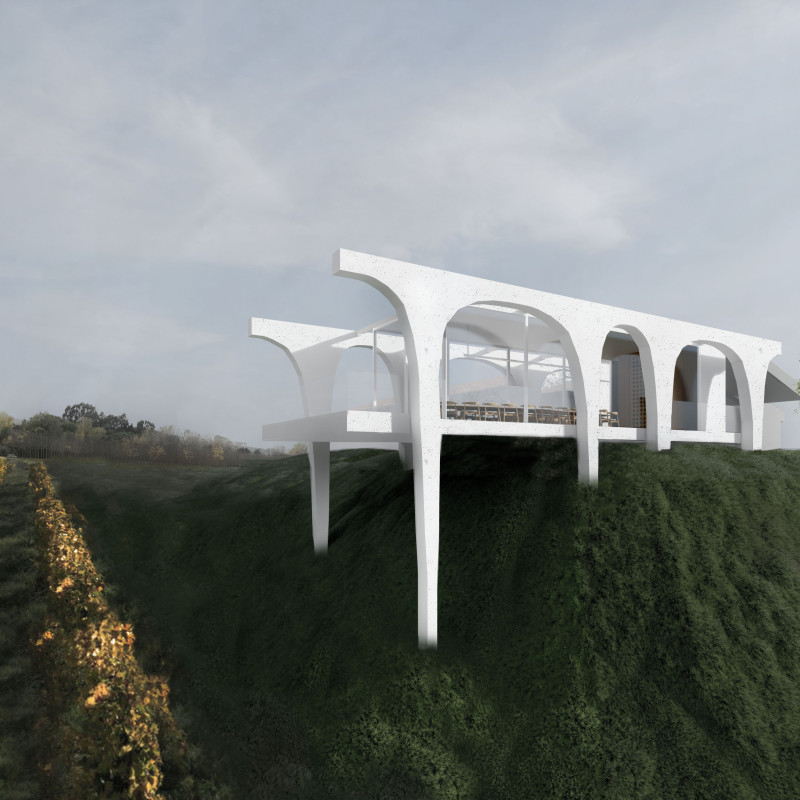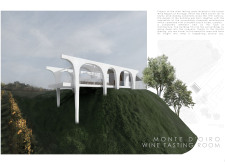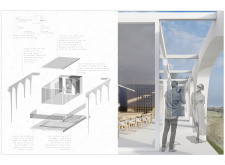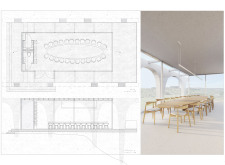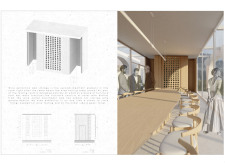5 key facts about this project
The project employs an elevated positioning, allowing panoramic views of the vineyard hills and enhancing the overall experience for visitors. The architecture reflects a blend of modern building techniques and traditional elements inherent in the region's winemaking heritage.
Innovative Structural Design
Unique design approaches are evident in the structural elements of the Wine Tasting Room. The use of reinforced concrete provides overall stability, while light steel is utilized for the roof structure, promoting a lightweight yet durable solution. Large glass panels are strategically placed to maximize natural light and strengthen the connection between the indoor and outdoor environments. This design choice aids in creating an inviting atmosphere, allowing visitors to immerse themselves in the sensory experience of wine tasting.
Interior Layout and Functionality
The interior layout of the tasting room features a spacious central area designed for gatherings. A large table serves as the focal point, facilitating interaction during tastings. The exhibition area incorporates wood as a primary material, with circular cutouts for showcasing wine bottles artistically. This design element not only serves a functional purpose but also enhances the overall aesthetic appeal of the space.
The corridors, bordered by glass railings, create pathways that link different sections of the building, ensuring fluid movement throughout the tasting room. The careful orchestration of spaces highlights the project’s commitment to creating a comprehensive user experience, from tasting to education.
The integration of sustainability principles also plays a significant role in this project. By choosing durable materials like concrete and wood, and minimizing earth disturbance through an elevated design, the project aligns with sustainable architectural practices.
Visitors are encouraged to explore the detailed architectural plans, sections, and designs to gain deeper insights into the specific architectural ideas that underpin the Monte D'Oiro Wine Tasting Room. This exploration can provide valuable context on how these design elements contribute to its overall functionality and aesthetic quality.


